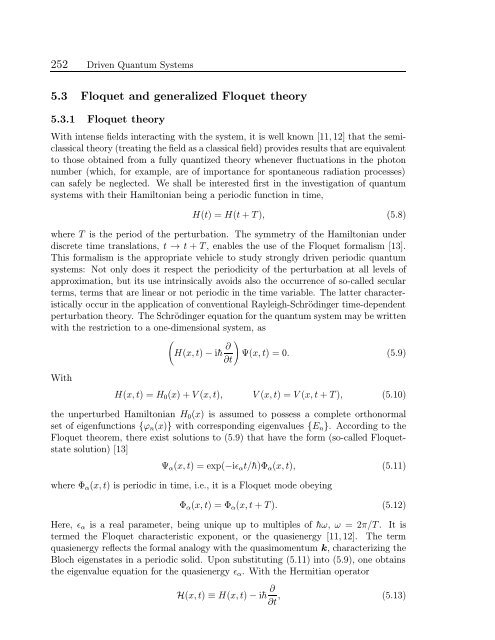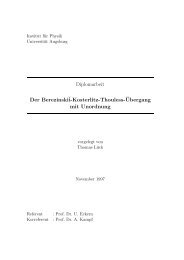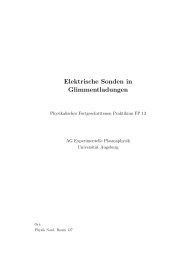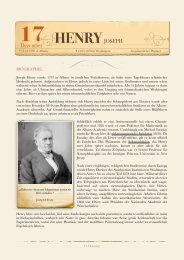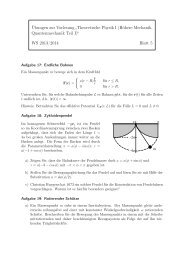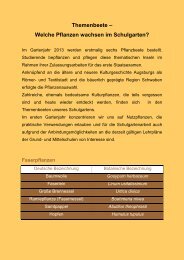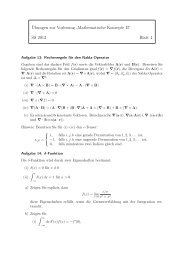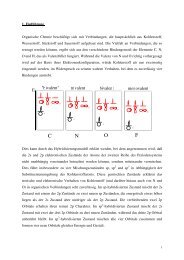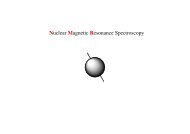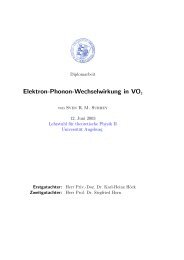Driven Quantum Systems - Institut für Physik
Driven Quantum Systems - Institut für Physik
Driven Quantum Systems - Institut für Physik
You also want an ePaper? Increase the reach of your titles
YUMPU automatically turns print PDFs into web optimized ePapers that Google loves.
252 <strong>Driven</strong> <strong>Quantum</strong> <strong>Systems</strong><br />
5.3 Floquet and generalized Floquet theory<br />
5.3.1 Floquet theory<br />
With intense fields interacting with the system, it is well known [11, 12] that the semiclassical<br />
theory (treating the field as a classical field) provides results that are equivalent<br />
to those obtained from a fully quantized theory whenever fluctuations in the photon<br />
number (which, for example, are of importance for spontaneous radiation processes)<br />
can safely be neglected. We shall be interested first in the investigation of quantum<br />
systems with their Hamiltonian being a periodic function in time,<br />
H(t) =H(t+T), (5.8)<br />
where T is the period of the perturbation. The symmetry of the Hamiltonian under<br />
discrete time translations, t → t + T , enables the use of the Floquet formalism [13].<br />
This formalism is the appropriate vehicle to study strongly driven periodic quantum<br />
systems: Not only does it respect the periodicity of the perturbation at all levels of<br />
approximation, but its use intrinsically avoids also the occurrence of so-called secular<br />
terms, terms that are linear or not periodic in the time variable. The latter characteristically<br />
occur in the application of conventional Rayleigh-Schrödinger time-dependent<br />
perturbation theory. The Schrödinger equation for the quantum system may be written<br />
with the restriction to a one-dimensional system, as<br />
(<br />
H(x, t) − i¯h ∂ )<br />
Ψ(x, t) =0. (5.9)<br />
∂t<br />
With<br />
H(x, t) =H 0 (x)+V(x, t), V(x, t) =V(x, t + T ), (5.10)<br />
the unperturbed Hamiltonian H 0 (x) is assumed to possess a complete orthonormal<br />
set of eigenfunctions {ϕ n (x)} with corresponding eigenvalues {E n }. According to the<br />
Floquet theorem, there exist solutions to (5.9) that have the form (so-called Floquetstate<br />
solution) [13]<br />
Ψ α (x, t) =exp(−iɛ α t/¯h)Φ α (x, t), (5.11)<br />
where Φ α (x, t) is periodic in time, i.e., it is a Floquet mode obeying<br />
Φ α (x, t) =Φ α (x, t + T ). (5.12)<br />
Here, ɛ α is a real parameter, being unique up to multiples of ¯hω, ω =2π/T. It is<br />
termed the Floquet characteristic exponent, or the quasienergy [11, 12]. The term<br />
quasienergy reflects the formal analogy with the quasimomentum k, characterizing the<br />
Bloch eigenstates in a periodic solid. Upon substituting (5.11) into (5.9), one obtains<br />
the eigenvalue equation for the quasienergy ɛ α . With the Hermitian operator<br />
H(x, t) ≡ H(x, t) − i¯h ∂ ∂t , (5.13)


